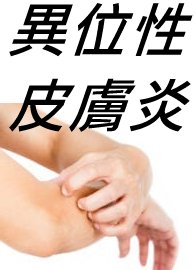search
subject
| symptom | Stuffy Nose |
smart_toy
bubble_chart Concept
Stuffy nose, also known as nasal congestion or nasal blockage, refers to the obstruction of airflow through the nasal passages during breathing.
In ancient medical literature, stuffy nose is also referred to as stuffy nose, generally considered as "窒" or "塞". Depending on the disease cause and pathology, it can clinically present in various forms such as episodic, alternating, persistent, or intermittent.
bubble_chart Pattern Analysis
- External Contractionwind-cold︰Nasal congestion occurs in episodes, accompanied by clear nasal discharge and sneezing. Systemic symptoms include fever, aversion to cold, etc., with a thin white tongue coating and a floating or floating-tight pulse. It is caused by wind-cold invading the lungs, leading to impaired lung qi. The main manifestations are clear nasal discharge and slightly red nasal mucosa. The treatment should focus on dispersing wind and dissipating cold, as well as relieving stuffy orifices, using Magnolia Flower Powder.
- Wind-heat Invasion︰The nasal congestion is severe and paroxysmal, with yellow nasal discharge, accompanied by symptoms such as fever, headache, aversion to wind, sweating, thirst, and sore throat. The tongue coating is thin and yellow, and the pulse is floating and rapid. This is due to wind-heat disturbing the upper body, leading to nasal obstruction. The nasal discharge is yellow and thick, with obvious redness of the nasal mucosa. The treatment should focus on dispersing wind and clearing heat to relieve stuffy orifices. Mulberry Leaf and Chrysanthemum Decoction combined with Cocklebur Fruit Powder is the main prescription.
- Lung Channel Heat Stagnation︰Nasal congestion persists for a long time, presenting as intermittent or continuous, with sticky yellow nasal discharge, accompanied by a distended and stuffy head, poor sense of smell, and memory decline. The tongue texture is red with a yellow coating, and the pulse is wiry and rapid. It is caused by wind-heat pathogens lingering in the lung system, disorder of qi movement, and lung qi failing in purification. Symptoms include nasal congestion and sticky yellow nasal discharge. Treatment should focus on dispersing wind and clearing heat, expelling pus, and relieving stuffy orifices. The recommended prescription is Cocklebur Fruit Powder.
- Liver-gallbladder Dampness-heat︰Nasal congestion with profuse, yellow, turbid, and foul-smelling discharge, prolonged duration, poor sense of smell, and memory decline, accompanied by dry throat, bitter taste in the mouth, blurred vision, tinnitus, and other symptoms. The tongue texture is red with yellow coating, and the pulse is wiry and rapid. This is due to liver-gallbladder dampness-heat transferring heat to the brain, manifesting as copious, thick, yellow, and foul-smelling nasal discharge, along with dizziness and other symptoms. The treatment should focus on resolving turbidity and removing toxins, as well as clearing liver-gallbladder dampness-heat. The recommended formula is Pig Bile Patchouli Pill .
- Deficiency of Both the Lung and Kidney︰The nasal congestion is persistent, varying in severity, accompanied by symptoms such as decreased sense of smell, dry and itchy nose, thin white tongue coating, and a fine pulse. The lung orifice opens into the nose; lung qi deficiency leads to nasal cervical malignancy with cachexia. Kidney yin deficiency results in body fluids failing to ascend, leading to the generation of deficient dryness and wind, causing injury to the muscle membrane. The characteristic features of this syndrome include a wide nasal cavity with dry crusts attached, along with symptoms such as deafness, tinnitus, and dizziness. The treatment should focus on nourishing yin and moistening dryness, enriching and tonifying the lung and kidney. The recommended formulas are Fluid-Increasing Decoction combined with Lily Bulb Metal-Securing Decoction.
- Dongyuan Shishu: "If the spleen and stomach are damaged due to hunger, fullness, or overwork, and the qi that expels pathogens from the exterior is weakened, the qi that circulates cannot rise. Pathogens block the orifices, hence the nose is obstructed and unable to smell. It is advisable to nourish stomach qi, so that yang qi and pectoral qi rise, and the nasal passages will then be clear."
bubble_chart Other Related Items






